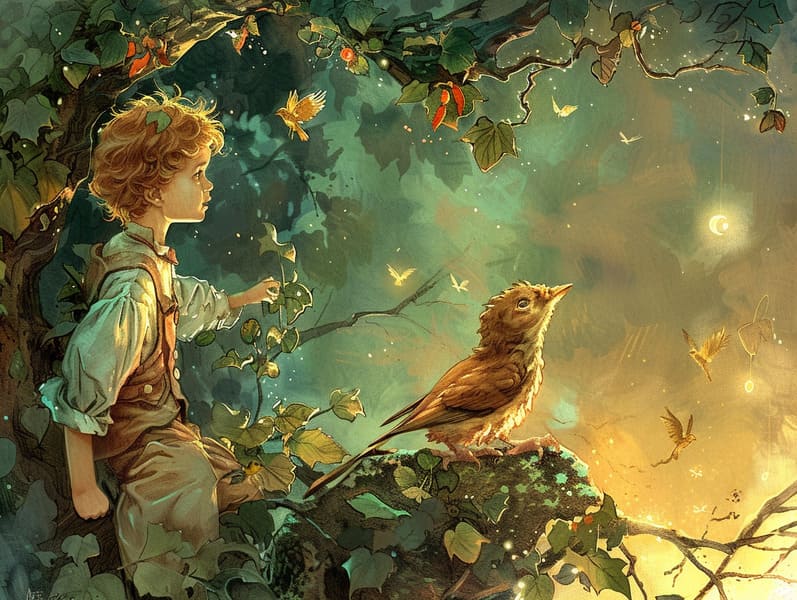The Journey of Fairy Tales with Its Unceasing Majesty.

Children's fairy tales have timeless appeal. These narratives have been recounted from one generation to the next far before they were ever transcribed. They originated from a variety of backgrounds, including Asian traditions. They were initially transmitted among older generations, often carrying themes and messages relevant to the societal norms and beliefs of the time.
The Grimm brothers, Jacob and Wilhelm, were among the first to gather and publish many of these beloved tales. Their volume, "Grimm's Story Collection," included stories like "The Story of Cinderella," "The Bread Crumb Trail," and "The True Story of Snow White," which have since become essentials in the world of iconic fairy tales. Similarly, Hans Christian Andersen's charming stories, such as "The Mermaid's Tale," and "The Little Duckling," have floated into hearts worldwide, solidifying their place in the pantheon of treasured fairy tales.
Even though they are old, these tales remain as applicable as ever, especially as bedtime stories for kids. These enchanting tales are now available in different formats, including richly illustrated books, captivating animations, and web-based fairy tales.
Their continued relevance can be linked to several magical reasons:
Moral Lessons: Old fairy tales often whisper important moral lessons. Fairy tales like "The Boy Who Cried Wolf" teach the significance of being truthful, while "The Race of the Tortoise and the Hare" underline the merits of steadfastness and modesty. These stories offer the young clear distinctions between right and wrong, forming their moral compass in a mild yet meaningful way.
Warmth and Understanding: Traditional fairy tales frequently showcase individuals facing tests and troubles, motivating audiences to understand with their struggles and boost their triumphs. For instance, "Beauty's Beast" reveals the value of appreciating inner worth to realize the inner core of a being, nurturing understanding and appreciation.
Cultural Knowledge: Many old fairy tales are interwoven with the cultural contexts from which they originated. Exploring these narratives can provide informative snapshots into different historical contexts, advancing a sense of world insight and perception.
Creativity and Fantasy: The fantasy-filled elements in fairy tales—magical beings—encourage children’s fantastical thinking. These narratives carry readers to imaginary realms, awakening innovative ideas and a sense of fascination that endures a lifetime.
Traditional fairy tales are not only entrancing but also didactic. They act as charming tools in developing various mental and more info emotional abilities in children. When traditional fairy tales are recited, they foster verbal development by bringing new linguistic elements and detailed sentence structures. This practice also improves hearing abilities and focus, as the young track the narrative, keen to see what happens next.
Furthermore, exploring the themes and characters of traditional fairy tales can improve thinking skills and evaluative skills. Young readers are guided to see patterns, guess what will happen, and catch on to cause and effect. These conversations also benefit children express their thoughts and feelings, fostering their emotional intelligence.
In today’s digital age, the existence of digital storybooks has made these fairy tales more reachable than ever. Online platforms and software feature extensive collections of bedtime fairy tales that can be seen or heard anytime, anywhere. Fairy tales told out loud are particularly favored, presenting an interactive method for the young to delight in these charming tales. Narrated books and read-aloud videos guide characters and settings to life, often joined by mesmerizing background sounds and tunes that augment the narrative journey.
The enduring charm of timeless fairy tales lies in their ability to evolve to the present while preserving their central values. Contemporary versions of these narratives often feature more representative protagonists and modern settings, making them familiar to today’s audience. However, the key lessons of bravery, warmth, and equity remain unchanged, continuing to connect with young listeners of all ages.
Timeless fairy tales also offer a sense of comfort and recognition. They deliver a neat narrative with a plain beginning, middle, and end, often concluding with the settlement of conflicts and the triumph of morality over immorality. This uniformity can be reassuring for young ones, delivering a sense of stability in an always shifting world.
Timeless fairy tales continue to enchant and teach new generations, maintaining their mystique and applicability in modern society. As nighttime stories for kids, they present a perfect blend of captivation and insight, nurturing moral values, empathy, and creativity. The presence of digital fairy tales and the favor of fairy tales told out loud guarantee that these traditional tales remain accessible to new generations.
By maintaining and circulating these stories, we continue to praise the rich tapestry of storytelling and cultural heritage. Whether you are perusing a richly illustrated book, seeing a virtual library, or listening via an sound book, the allure of children's fairy tales is always within reach. These fairy tales emphasize of the steadfast ability of tales and its ability to unite us across eras and regions.
Regardless if you are reading a beautifully illustrated book, browsing a online collection, or listening through an voice book, the wonder of bedtime fairy tales is always within reach.
These narratives highlight of the unending force of stories and its ability to bond us across time and space, making a tie that enchants and educates alike.